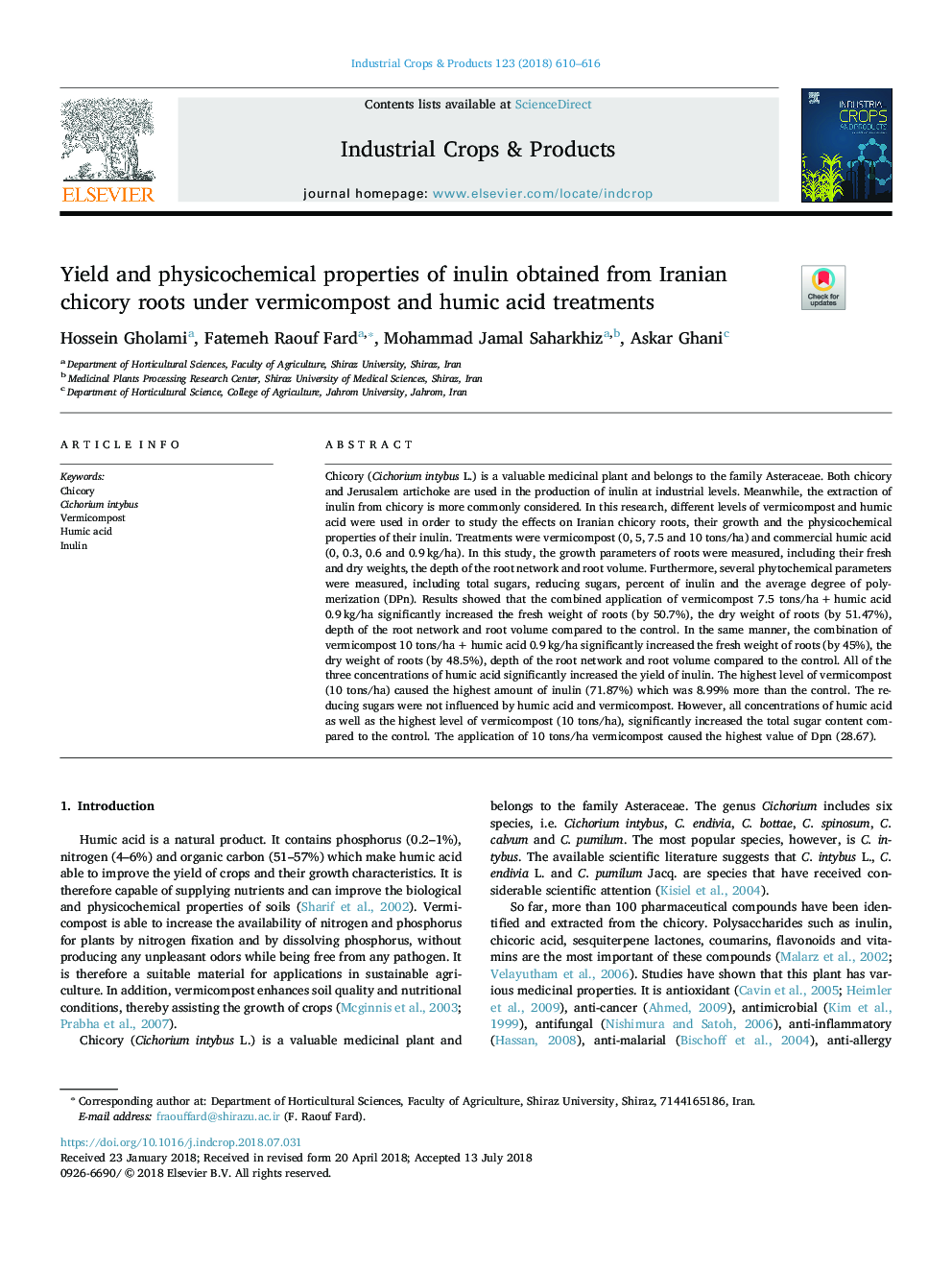| کد مقاله | کد نشریه | سال انتشار | مقاله انگلیسی | نسخه تمام متن |
|---|---|---|---|---|
| 10117019 | 1624787 | 2018 | 7 صفحه PDF | دانلود رایگان |
عنوان انگلیسی مقاله ISI
Yield and physicochemical properties of inulin obtained from Iranian chicory roots under vermicompost and humic acid treatments
ترجمه فارسی عنوان
عملکرد و خصوصیات فیزیکوشیمیایی وینولین به دست آمده از ریشه چایی ایران تحت ورمی کمپوست و تیمار اسید هومیک اسید
دانلود مقاله + سفارش ترجمه
دانلود مقاله ISI انگلیسی
رایگان برای ایرانیان
کلمات کلیدی
موضوعات مرتبط
علوم زیستی و بیوفناوری
علوم کشاورزی و بیولوژیک
علوم زراعت و اصلاح نباتات
چکیده انگلیسی
Chicory (Cichorium intybus L.) is a valuable medicinal plant and belongs to the family Asteraceae. Both chicory and Jerusalem artichoke are used in the production of inulin at industrial levels. Meanwhile, the extraction of inulin from chicory is more commonly considered. In this research, different levels of vermicompost and humic acid were used in order to study the effects on Iranian chicory roots, their growth and the physicochemical properties of their inulin. Treatments were vermicompost (0, 5, 7.5 and 10 tons/ha) and commercial humic acid (0, 0.3, 0.6 and 0.9âkg/ha). In this study, the growth parameters of roots were measured, including their fresh and dry weights, the depth of the root network and root volume. Furthermore, several phytochemical parameters were measured, including total sugars, reducing sugars, percent of inulin and the average degree of polymerization (DPn). Results showed that the combined application of vermicompost 7.5 tons/haâ+âhumic acid 0.9âkg/ha significantly increased the fresh weight of roots (by 50.7%), the dry weight of roots (by 51.47%), depth of the root network and root volume compared to the control. In the same manner, the combination of vermicompost 10 tons/haâ+âhumic acid 0.9âkg/ha significantly increased the fresh weight of roots (by 45%), the dry weight of roots (by 48.5%), depth of the root network and root volume compared to the control. All of the three concentrations of humic acid significantly increased the yield of inulin. The highest level of vermicompost (10 tons/ha) caused the highest amount of inulin (71.87%) which was 8.99% more than the control. The reducing sugars were not influenced by humic acid and vermicompost. However, all concentrations of humic acid as well as the highest level of vermicompost (10 tons/ha), significantly increased the total sugar content compared to the control. The application of 10 tons/ha vermicompost caused the highest value of Dpn (28.67).
ناشر
Database: Elsevier - ScienceDirect (ساینس دایرکت)
Journal: Industrial Crops and Products - Volume 123, 1 November 2018, Pages 610-616
Journal: Industrial Crops and Products - Volume 123, 1 November 2018, Pages 610-616
نویسندگان
Hossein Gholami, Fatemeh Raouf Fard, Mohammad Jamal Saharkhiz, Askar Ghani,
